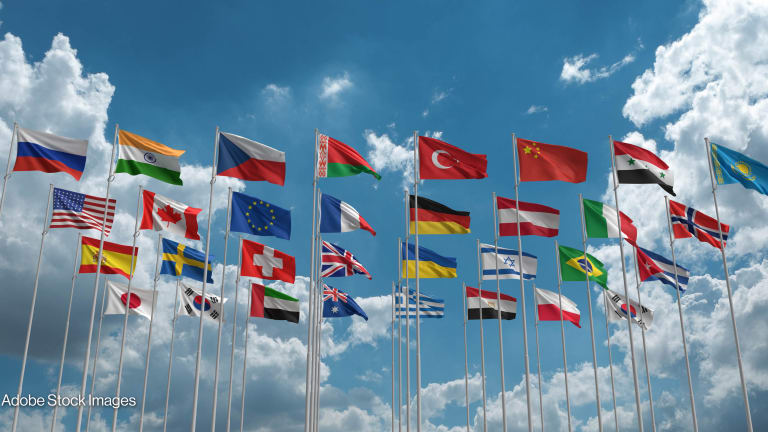
I recently spent a fascinating morning at the launch of a special edition of Humanitarian Exchange on the Typhoon Haiyan response in the Philippines, where we discussed how aid agencies can be more accountable to the people they serve.
In general, this means enabling them to influence what we do.
Everyone agreed it is a good idea. Or even a foundation of good practice. In theory, it ensures that the assistance we provide is relevant and respectful to the people we serve. In the Haiyan response, there’s plenty of evidence that we’re getting better at it — but that there’s also a way further to go.
The organization I work for, Plan International, along with World Vision and the International Organization for Migration are collaborating on a project to trial common tools for accountability, funded by the U.K. Department for International Development. It’s a very encouraging area that’s already been picked up by the United Nations in Iraq. They are developing a single call center for people to find out about humanitarian services and lodge complaints. (See also this impressive example of a collaborative approach to protection in Jordan.)
As ever, it’s more complicated in practice than we hoped. Different agencies are already using their own tools. We are supporting local media and government-citizen accountability, rather than setting up separate systems.
As a sector, we’ve been trying to reform practice for years through the HAP standard, the Sphere Core Standards, even the 1993 Red Cross Code of Conduct, among others. But progress has often been trumped by other pressures, including overstretched teams struggling to design and run projects fast in chaotic situations.
The new Core Humanitarian Standard, launched last month, provides a chance for a new approach. We need a simple agenda that addresses the core issues that shape field work.
How about this initial five-point plan to improve accountability to affected people?
1. Invest in leadership at all levels.
Without consistent leadership, accountability will be washed away by other priorities. The U.N. Office for the Coordination of Humanitarian Affairs’ Accountability to Affected People coordinators have a crucial role to play across the whole of any response.
Within agencies, leaders need to be identified in headquarters and field offices with specific responsibility to ensure that accountability gets the attention it requires. And they need to be backed up by resources.
2. Simplify the requirements (and the jargon).
We need to simplify the requirements for transparency and community engagement, and build them into our core practice. This means cutting through the confusing jargon: Accountability to Affected People, Communicating with Communities, Preventing Sexual Exploitation and Abuse, are just some examples.
See more related stories:
● From disasters to development: When volunteering goes under scrutiny
● As mapping gains ground, a need to manage expectations
● From Aceh to Haiti: Ensuring effectiveness of disaster aid
● The biggest mistake we make in disaster relief
Can we settle on simple, intuitive terms instead? We need staff to focus on talking to local people in ways that work from their point of view, and include marginalized groups, rather than off-the-shelf tools. And we urgently need the international organizations that lead these different areas to work together on a simple, consistent approach.
3. Use collective approaches where possible.
The more that different agencies use the same terms and tools, the cheaper and easier it will be for everyone — and the easier for communities and government to understand us and talk to us.
The Core Humanitarian Standard provides a common foundation. It may not be perfect, but it’s pretty good and that’s good enough. We should use it. We should collaborate on collective tools like feedback mechanisms, communication campaigns and assessment tools where possible.
4. Adapt project plans.
Agencies need to be able to adapt their work in response to what local people tell them. Can we agree with donors (and internally) that we will review and re-plan the activities of all major projects three months after work starts, particularly in the first year of a major response, and then also at least annually? More flexibility would be better, but inevitably hard to organize on the ground.
5. Report beneficiary satisfaction.
Donors and senior managers should require field teams to systematically report beneficiaries’ satisfaction with their work. This could be done however makes sense in the context. It has the potential to generate real insights into the work carried out and reinforce a focus on listening and responding to local people.
Although this five-point plan is still being developed and refined, I hope it can develop into a contribution to the World Humanitarian Summit in May 2016.
What do you think? Are these five steps a good start for aid agencies to become more accountable to their beneficiaries? Have your say by leaving a comment below.
Join the Devex community and access more in-depth analysis, breaking news and business advice — and a host of other services — on international development, humanitarian aid and global health.








